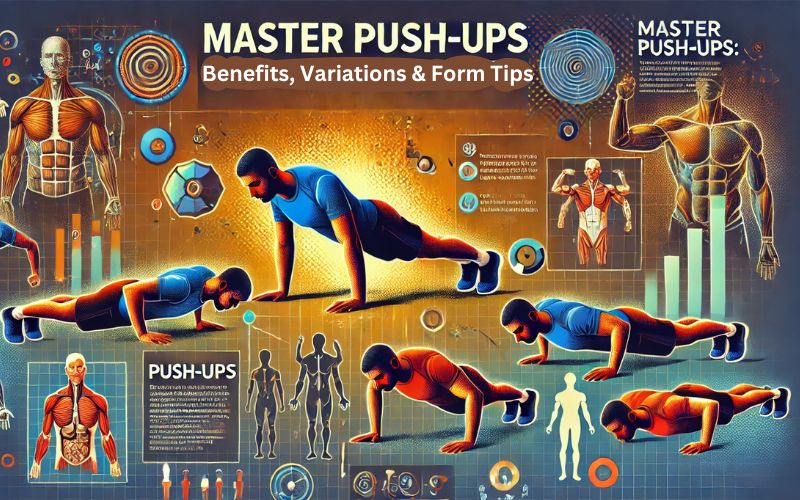Table of Contents
Introduction
Jumping straight into a workout without warming up is like starting a car on a freezing morning and immediately hitting full speed. Your body needs gradual preparation to function at its best. A proper warm-up helps increase blood flow, loosen tight muscles, and prime your joints for movement.
Skipping warm-ups can lead to stiffness, reduced performance, and a higher risk of injury. On the other hand, a well-structured warm-up ensures that your muscles are activated, your heart rate is elevated, and your mind is focused—setting the stage for a powerful, injury-free workout.
The Science Behind an Effective Warm-Up
A good warm-up isn’t just about moving around aimlessly. It’s about preparing your body for the specific demands of your workout. Scientifically, a warm-up:
? Increases muscle temperature – Warm muscles contract more efficiently and generate more power.
? Improves oxygen delivery – Higher blood flow ensures that muscles receive the oxygen they need for endurance.
? Activates the nervous system – Enhances reaction time, coordination, and strength output.
? Lubricates joints – Prepares your knees, shoulders, and hips for movement, reducing wear and tear.
By understanding how warm-ups enhance performance and prevent injuries, it becomes clear why they are a non-negotiable part of any training session.
Essential Components of a Proper Warm-Up
An effective warm-up isn’t just a few arm swings and light jogging. It should be structured, progressive, and relevant to your workout. The key components of a solid warm-up include:
1️⃣ Light Cardio (5–10 minutes) – Activities like jogging, jumping jacks, or cycling gradually elevate your heart rate.
2️⃣ Dynamic Stretching – Leg swings, arm circles, and hip openers loosen up key muscle groups.
3️⃣ Activation Drills – Glute bridges, resistance band exercises, and core engagement drills wake up dormant muscles.
4️⃣ Movement-Specific Exercises – If you’re about to lift weights, practice lighter reps of your main lift. If you’re running, do short acceleration drills.
This step-by-step approach ensures that your body is properly primed and ready for the demands of your workout.
Best Warm-Up Exercises for Different Workouts
Not all warm-ups are created equal. The best warm-up depends on your workout type. Here are tailored routines for different types of exercises:
?️ Strength Training Warm-Up:
- Light jogging or jump rope (5 minutes)
- Shoulder mobility drills (for pressing exercises)
- Bodyweight squats or lunges (for leg workouts)
- Resistance band pulls (for back and shoulders)
? Running & Cardio Warm-Up:
- High knees and butt kicks (2–3 minutes)
- Leg swings and hip circles (for hip mobility)
- Short strides or light sprints (to wake up fast-twitch fibers)
? Yoga & Flexibility Warm-Up:
- Deep diaphragmatic breathing
- Gentle spinal twists and forward bends
- Slow, controlled joint rotations
? Sports & Explosive Training Warm-Up:
- Plyometric drills like bounding and skips
- Lateral shuffles and agility drills
- Quick-reaction movements like cone drills
Tailoring your warm-up to your activity ensures better performance and injury prevention.
Common Warm-Up Mistakes to Avoid
Many people warm up incorrectly without even realizing it. Here are some common mistakes and how to avoid them:
❌ Skipping the Warm-Up Entirely – Leads to tight muscles, stiff joints, and potential injuries. Always take at least 5–10 minutes to prepare.
❌ Static Stretching Before Strength Training – Holding stretches for too long before lifting can reduce power output. Stick to dynamic movements first.
❌ Not Focusing on Weak Areas – If you have tight hips, weak glutes, or unstable shoulders, spend extra time on activation drills.
❌ Overdoing Cardio Before Lifting Weights – Too much cardio before strength training can drain your energy. Keep it light and short.
By avoiding these mistakes, your warm-up will be more effective, efficient, and aligned with your goals.
How Supplements Support Warm-Up and Performance
Proper nutrition and supplementation can enhance your warm-up routine by boosting energy, endurance, and muscle activation. Here’s how supplements play a role:
? Pre-Workout Supplements – Containing caffeine, beta-alanine, and nitric oxide boosters, pre-workouts like C4 help increase focus, energy, and blood flow before training.
? Creatine – Supports explosive power and strength, making it easier to perform warm-up sets and transition into heavy lifting.
? Electrolytes & Hydration – Proper hydration with electrolytes (sodium, potassium, magnesium) ensures that muscles contract efficiently and reduces cramping.
?️ BCAAs (Branched-Chain Amino Acids) – Helps reduce muscle fatigue, especially in prolonged workouts.
? Joint Support Supplements – Ingredients like collagen and glucosamine support joint mobility, making warm-ups smoother and pain-free.
Adding the right supplements optimizes your body’s response to warm-ups, allowing for peak performance and endurance.
Final Thoughts: Make Warming Up a Habit
A proper warm-up is the foundation of every great workout. It prepares your body for movement, enhances flexibility, and minimizes the risk of injury. Whether you’re lifting, running, or playing sports, dedicating a few extra minutes to a structured warm-up can drastically improve your performance.
By focusing on dynamic movements, activation drills, and proper supplementation, you can train harder, move better, and recover faster. Make warming up a consistent habit, and you’ll see the difference in both strength and longevity.
Don’t just train hard—train smart. Start every session with a solid warm-up and set yourself up for success.


























